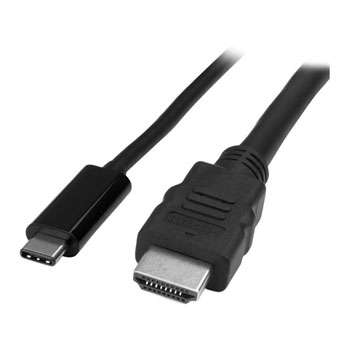
But the total number of displays you can run is completely separate from the ability to run multiple displays from a single GPU interface.
#Is there a thunderbolt to hdmi adapter pro
The M1 could only run two (including the built-in display on the MacBooks as opposed to the Mac Mini), while the M1 Pro can run three and the M1 Max can run five. The difference between the M1 and the M1 Pro/Max is the total number of displays that they can run.
#Is there a thunderbolt to hdmi adapter windows
This became clear with Intel-based Macs that could not run MST while running macOS, but could run MST just fine when booted into Windows via Boot Camp. And thus far, lack of MST support has been a limitation of macOS, not a hardware limitation. The article you linked didn’t address that at all. I have seen zero indication that these systems support DisplayPort MST. I realize it’s an additional cable, but that would also remove the requirement to spend money upgrading the I have a 14” MBP with an M1 Pro. And depending on your work laptop model, that may be an option there too.

Worst case of course you could just connect the USB-C to HDMI 2.1 adapter directly to a USB-C port on your MBP. Video traffic over USB-C and Thunderbolt is DisplayPort natively. In a dock scenario, that would require both the dock and attached system to support that standard. I realize it’s an additional cable, but that would also remove the requirement to spend money upgrading the USB-C to HDMI 2.1 adapters can enable 4K 120 Hz output if the source USB-C port supports DisplayPort 1.4/HBR3. But HDMI 2.1 adapters still have value today in enabling 4K 120 Hz. So HDMI 2.1 would be bottlenecked by Thunderbolt and thus prevented from being fully utilized, which could create confusion and aggravation for users who did not realize this and found themselves unable to use an HDMI 2.1 port on a Thunderbolt dock to its maximum capacity. The second reason is that HDMI 2.1 supports up to 48 Gbps of bandwidth, which is more than Thunderbolt 3 and 4 even BEFORE considering that Thunderbolt has to carry both video and PCIe traffic. The first is that the main use case for that today is 4K 120 Hz, and high refresh rate displays still aren’t all that common, and are even less common in work settings where docks are most often used. If that is the case and affects the new 2021 MBP - neither of which I am completely certain about - then 4K 120 Hz through a WD19TBS from a Mac likely won’t be possible, and the reason would be that Dell is essentially working around an annoying limitation of macOS and chose to do so in a way that prioritizes multiple display support over single high-bandwidth display support.Īlso note that even if this does work, you may be unable to run any OTHER display through the dock simultaneously, simply due to the amount of bandwidth 4K 120 Hz consumes.īut in terms of finding a dock with an integrated HDMI 2.1 port, that may take a while to arrive, for two reasons. This has to do with how GPU interfaces work over Thunderbolt and how the WD19TBS allocates video bandwidth across its ports, both of which vary depending on the DisplayPort revision in use, as well as the fact that macOS still doesn’t support DisplayPort MST, which creates some problem scenarios when trying to run multiple displays through Thunderbolt when using DP 1.4/HBR3. However, a potential stumbling block is that the WD19TBS specifically might force Macs to run in DP 1.2/HBR2 mode. So while I don’t have the equipment to test this myself, the specs and underlying technologies suggest that a USB-C to HDMI 2.1 adapter should allow you to get 4K 120 Hz out of a WD19TBS’s USB-C port when you’re running it from a 2021 MBP. It can also provide up to 90W of power to non-Dell systems. In terms of your work system, I have no idea whether it supports that standard because the system model wasn’t specified.īut the Dell WD19TBS is a Thunderbolt dock with USB-C ports that support DisplayPort 1.4/HBR3 output. 15” systems was different in crucial ways. Similarly, it doesn’t matter in this specific case, but in many cases the size of the MBP is an important bit of information since at least in the past, the hardware specs of 13” vs. Although fyi just for the benefit of people who might read threads like these well into the future, it’s helpful to specify an exact model rather than saying “new” at the time you post. If your “new MacBook Pro” is the 2021 model with an M1 Pro or M1 Max chip, it supports that standard.

USB-C to HDMI 2.1 adapters can enable 4K 120 Hz output if the source USB-C port supports DisplayPort 1.4/HBR3.


 0 kommentar(er)
0 kommentar(er)
